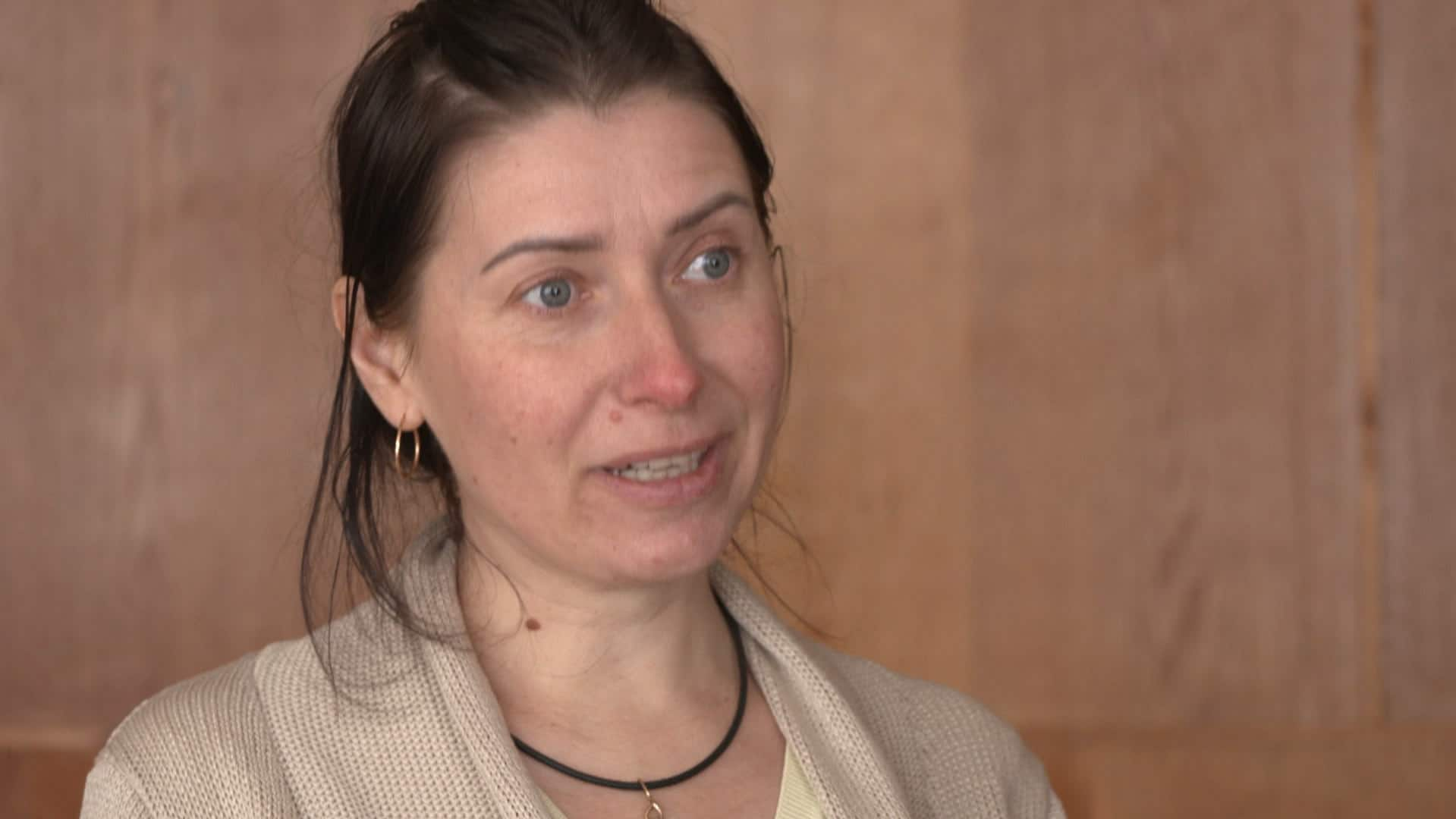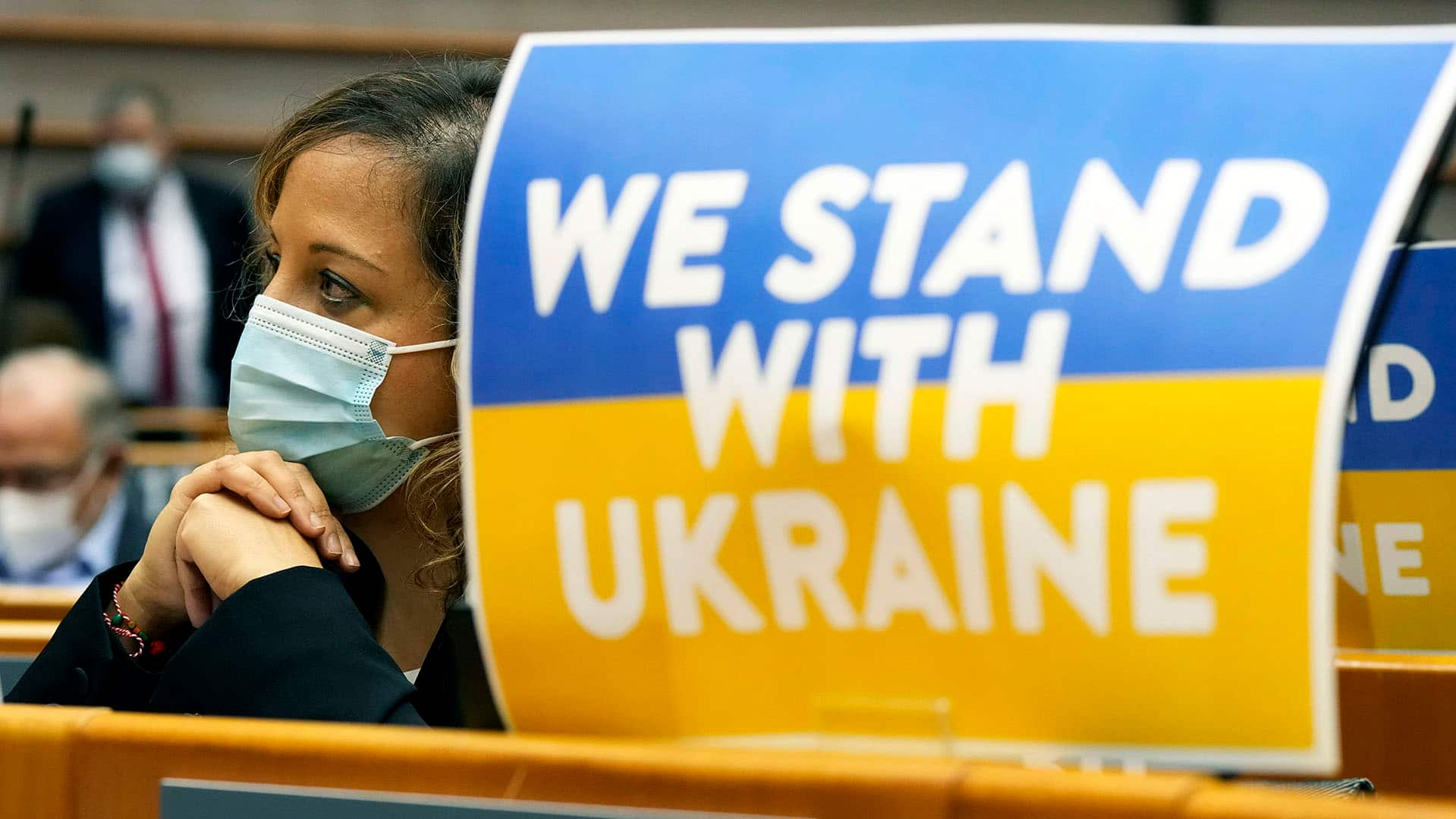Fire out at key Ukraine nuclear plant as Russia seizes site | CBC News
Ukrainian firefighters on Friday extinguished a blaze at Europe’s biggest nuclear plant that was ignited by a Russian attack and no radiation was released, UN and Ukrainian officials said, as Russian forces pressed their campaign to cripple the country despite global condemnation.
The head of the United Nations’ atomic agency said that a Russian “projectile” hit a training centre at the plant, which is located in the city of Enerhodar, in Ukraine’s south.
The most recent statement from the International Atomic Energy Agency, which is in touch with officials on the ground, said that Russia had taken control of the site — but that Ukrainian staff were still operating the plant.
Ukraine’s state nuclear regulator said earlier that no changes in radiation levels have been recorded so far after the Zaporizhzhia plant came under attack. IAEA director-general Rafael Mariano Grossi later said no radioactive material was released, but that two people were injured in the fire that broke out at the plant.
The attack caused worldwide concern — and evoked memories of the world’s worst nuclear disaster, at Ukraine’s Chornobyl.
The shelling of the plant came as the Russian military advanced on a strategic city on the Dnieper River near where the facility is located, and gained ground in their bid to cut Ukraine off from the sea. That move would deal a severe blow to Ukraine’s economy and could worsen an already dire humanitarian situation.
Checking for damage
Initial reports conflicted over whether one or two fires broke out at the plant. Nuclear plant spokesperson Andriy Tuz told Ukrainian television overnight that shells fell directly on the facility, and set fire to reactor No. 1, which is under renovation and not operating, and to an administrative training building.
On Friday morning, officials only referenced a blaze at the training building when they said that all fires at the plant were out — which Grossi also confirmed. The regional military administration reported unspecified damage to the compartment of reactor No. 1, but said it does not affect the safety of the power unit.
Grossi said that only one reactor at the plant is operating, at about 60 per cent capacity.
The nuclear regulator said staff are studying the site to check for other damage.
The head of the International Atomic Energy Agency, Rafael Mariano Grossi, said the fire is now out a building in the Zaporizhzhia Nuclear Power plant, Europe’s largest nuclear facility. The safety systems of the plant’s reactors were not affected but the situation continues to be ‘extremely tense and challenging,’ he said. 12:34
In the statement, the IAEA said radiation monitoring systems at the site are “fully functional.”
“However, the operator has reported that the situation remains very challenging and therefore it has not yet been possible to access the whole site to assess that all safety systems are fully functional.”
The confusion itself underscored the dangers of active fighting near a nuclear power plant. It was the second time since the Russian invasion began just over a week ago that concerns about a nuclear accident or a release of radiation materialized, following a previous battle at Chornobyl.
The regulator noted in a statement on Facebook the importance of maintaining the ability to cool nuclear fuel, saying the loss of such ability could lead to an accident even worse than the 1986 Chornobyl disaster or the 2011 Fukushima meltdowns in Japan. It also noted that there is a storage facility for spent nuclear fuel at the site, though there was no sign that facility was hit by shelling.
The Zaporizhzhia regional military administration said that measurements taken at 7 a.m. local time Friday showed radiation levels in the region “remain unchanged and do not endanger the lives and health of the population.” Nuclear officials from Sweden to China also said no radiation spikes have been reported.
“The fire at the [nuclear plant] has indeed been extinguished,” Enerhodar Mayor Dmytro Orlov announced on his Telegram channel Friday morning. His office told The Associated Press that the information came from firefighters who were allowed onto the site overnight.
Call for emergency meeting of UN Security Council
Leading nuclear authorities were worried but not panicked.
The assault led to phone calls between Ukrainian President Volodymyr Zelensky and U.S. President Joe Biden and other world leaders. The U.S. Department of Energy activated its nuclear incident response team as a precaution.
Zelensky also spoke with Prime Minister Justin Trudeau and Deputy Prime Minister Chrystia Freeland about the nuclear plant.
British Prime Minister Boris Johnson called for an emergency meeting of the UN Security Council in “coming hours” to raise the issue of Russia’s attack on the plant, according to a statement from his office.
NATO Secretary General Jens Stoltenberg said at a briefing on Friday that Russia’s “reckless actions” around the nuclear plant highlight the danger of the war. The NATO chief again urged Putin to end the fighting, withdraw troops and engage in diplomatic efforts in good faith.
NATO allies rejected Ukraine’s demand for no-fly zones on Friday, saying they were increasing support but that stepping in directly would lead to a broader, even more brutal European war so far limited to Russia’s assault on its neighbour.
In an emotional speech in the middle of the night, Zelensky said he feared an explosion that would be “the end for everyone. The end for Europe. The evacuation of Europe.”
But most experts saw nothing to indicate an impending disaster.
“The real threat to Ukrainian lives continues to be the violent invasion and bombing of their country,” the American Nuclear Society said in a statement.
Russian President Vladimir Putin’s forces have brought their superior firepower to bear over the past few days, launching hundreds of missiles and artillery attacks on cities and other sites around the country and making significant gains in the south.
With the invasion in its second week, another round of talks between Russia and Ukraine yielded a tentative agreement to set up safe corridors to evacuate citizens and deliver humanitarian aid to the country, overturned by a war that has sent more than one million people fleeing over the border and countless others sheltering underground night after night.
A handful of cities are without heat and at least one is struggling to get food and water.
What’s happening on the ground:
- In Enerhodar, the mayor said Russian shelling stopped a few hours before dawn, and residents of the city of more than 50,000 who had stayed in shelters overnight could return home. The city awoke with no heat, however, because the shelling damaged the city’s heating main, he said.
- In the south, the Russians announced the capture of the city of Kherson, a vital Black Sea port of 280,000, and local Ukrainian officials confirmed the takeover of the government headquarters there, making it the first major city to fall since the invasion began a week ago.
- A Russian airstrike on Thursday destroyed the power plant in Okhtyrka, leaving the city without heat or electricity, the head of the region said on Telegram. In the first days of the war, Russian troops attacked a military base in the city, located between Kharkiv and Kyiv, and officials said more than 70 Ukrainian soldiers were killed. “We are trying to figure out how to get people out of the city urgently, because in a day the apartment buildings will turn into a cold stone trap without water, light or electricity,” Dmytro Zhyvytskyy said.
- Heavy fighting continued on the outskirts of another strategic port, Mariupol, on the Azov Sea. The battles have knocked out the city’s electricity, heat and water systems, as well as most phone service, officials said. Food deliveries to the city were also cut.
Associated Press video from the port city showed the assault lighting up the darkening sky above deserted streets and medical teams treating civilians, including a 16-year-old boy inside a clinic who could not be saved. The child was playing soccer when he was wounded in the shelling, according to his father, who cradled the boy’s head on the gurney and cried.
- In the northeast,, along another major axis of the Russian attack, the cities of Kharkiv and Chernihiv have been under bombardment since the start of the invasion, which worsened this week, but defenders are holding out.
- In the capital region, Kyiv has been shelled but has so far been spared a major assault, with Russia’s main attack force stalled for days in a miles-long convoy on a highway to the north.
Severing Ukraine’s access to the Black and Azov seas would deal a crippling blow to its economy and allow Russia to build a land corridor to Crimea, seized by Moscow in 2014.
Overall, the outnumbered, outgunned Ukrainians have put up stiff resistance, staving off the swift victory that Russia appeared to have expected. But a senior U.S. defence official, speaking on condition of anonymity, said Russia’s seizure of Crimea gave it a logistical advantage in that part of the country, with shorter supply lines that smoothed the offensive there.
All across Ukraine, communities like Kopychyntsi are mobilizing to provide supplies for both soldiers fighting against invading Russian forces and the people fleeing for their lives. 2:13
Ukrainian leaders called on the people to defend their homeland by cutting down trees, erecting barricades in the cities and attacking enemy columns from the rear. In recent days, authorities have issued weapons to civilians and taught them how to make Molotov cocktails.
“Total resistance. … This is our Ukrainian trump card, and this is what we can do best in the world,” Oleksiy Arestovich, an aide to Zelensky, said in a video message, recalling guerrilla actions in Nazi-occupied Ukraine during the Second World War.
The second round of talks between Ukrainian and Russian delegations was held in neighbouring Belarus. But the two sides appeared far apart going into the meeting, and Putin warned Ukraine that it must quickly accept the Kremlin’s demand for its “demilitarization” and declare itself neutral, renouncing its bid to join NATO.
The two sides said that they tentatively agreed to allow ceasefires in areas designated safe corridors, and that they would seek to work out the necessary details quickly. A Zelensky adviser also said a third round of talks will be held early next week.
The European Union has introduced a temporary measure to allow Ukrainians fleeing the Russian invasion to enter any member country. The new rules are a welcome respite, but do little to help those struggling to escape Ukraine. 2:32
For all the latest World News Click Here
For the latest news and updates, follow us on Google News.




